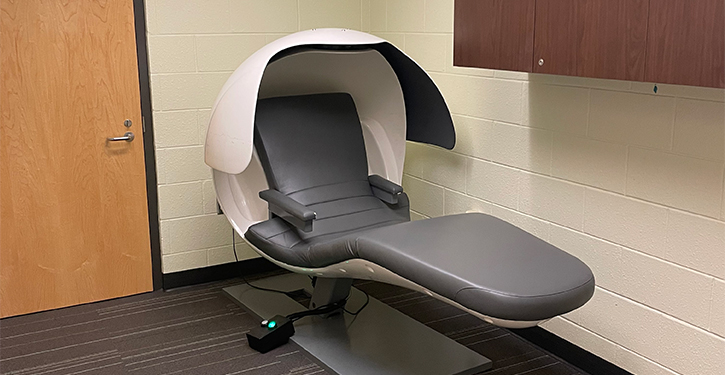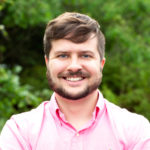Despite the busy days on campus, students at the University of South Florida (USF) have a location to get some much-needed, private rest. The WELL Fitness Center recently added multiple nap pods to provide a space for wellness and relaxation.
The WELL is operated in partnership between USF Recreation & Wellness (RecWell) and USF Health Shared Student Services. Chris Marks, the director of RecWell, said the collaboration between the two entities began in 2015 when USF Health Shared Student Services reached out about a planned renovation for spaces within the USF Health facilities. Not long after, The WELL was created.
“From the start, associate vice president Joe Ford and his team were great to work with,” said Marks. “After opening The WELL in 2017, the two teams meet quarterly to share any issues or concerns on the operations. This is where the groups identified nap pods in one location of campus were not being utilized and the need for them in another location. Everyone involved identified the relocation of equipment was the most effective way to serve students. The success of this partnership has led to a new plan for renovating additional space for more recreation and fitness needs.”
Details on Nap Pods
Olivia Brennan, the director of the Office of Student Life and Engagement, said USF Health Shared Student Services conducted surveys and focus groups with the student community to learn more about the types of spaces and amenities they would like to see offered.
“Specifically, students identified a need for a place to take naps in between classes and study sessions,” said Brennan. “Most USF Health students are in class from 8 a.m. to 5 p.m. and often stay on campus in the evening to study, or they participate in clinical rotations and internships in the community. They have extremely busy schedules and finding time to decompress is of the utmost importance.”
The department then identified a space within The WELL and created the ReCharge Room, which includes two office spaces for the nap pods. Students can reserve a nap room and have a quiet, private space to either sleep or take a break throughout the day.
The nap pods tilt up and down for added comfort and a zero-gravity experience. They are equipped with a rotating headpiece to block out light and noise, in addition to offering soft music and relaxing sounds. Also, they have gentle lights, a timer and vibration settings.
“Students enjoy the ability to reserve a nap room where they can shut the door for privacy, listen to music or use one of the sound machines provided in the space,” said Brennan. “Privacy was very important to students when it came to a space for napping.”
Feedback and Advice
Brennan said feedback from students is very positive. The most popular days they are used are Mondays, Tuesdays and Wednesdays with the busiest times being 11 a.m. to 1 p.m. and 3 to 4:30 p.m.
“Students have said they really enjoyed the napping experience and offered feedback to increase reservation times to 45 to 60 minutes,” said Brennan. “The current time frame to reserve a nap room for is 30 minutes. We will also be adding disposable eye masks and ear plugs based on student input.”
Brennan stressed the importance of providing locations on campus that promote relaxation and stress relief since that’s where students spend most of their time. For other schools considering adding offerings like nap pods, she recommended to use a check in/check out system as well as a cleaning protocol between uses.
“We also recommend not having locks on the nap room doors for safety,” said Brennan. “We removed the locks from the offices before turning them into nap rooms. The most important thing is to listen to the needs and wants of the students you are serving.”
With this addition to campus being made possible in part due to the partnership with RecWell, Marks advised for other recreation departments to be cooperative and transparent when starting collaborations.
“Start by being open to ideas for new spaces or programs,” said Marks. “This allows for honest discussions about how to best push through the challenges present in every project. “Then, everyone involved needs to be honest about those challenges. Working with partners to cover gaps can build trust and leads to long term effectiveness within the partnership.”
Want more updates and information on how your department can create beneficial partnerships and enhance the overall well-being of students? Sign up for a digital subscription here.
John is an editor at Peake Media. Contact him at john@peakemedia.com.












